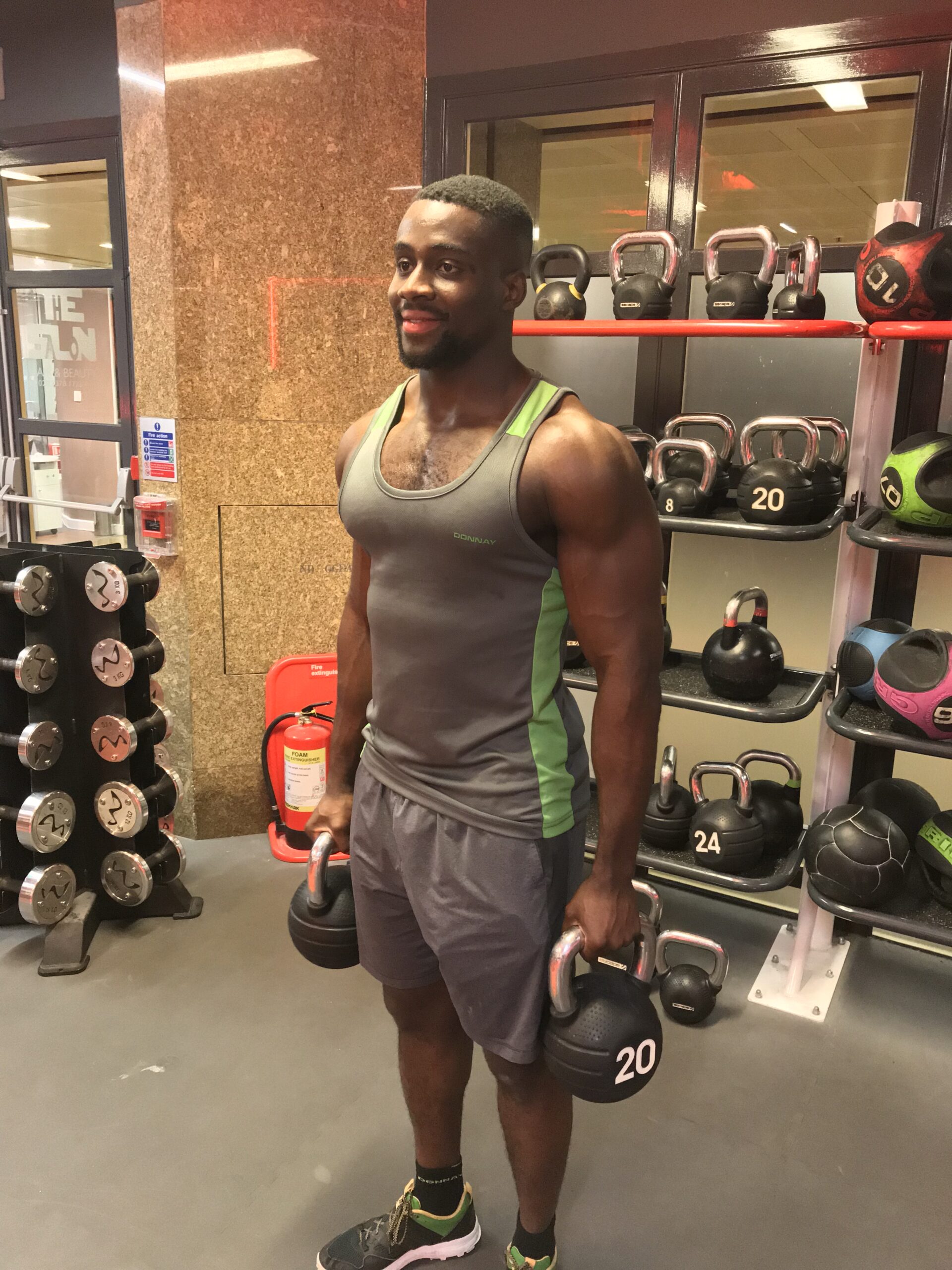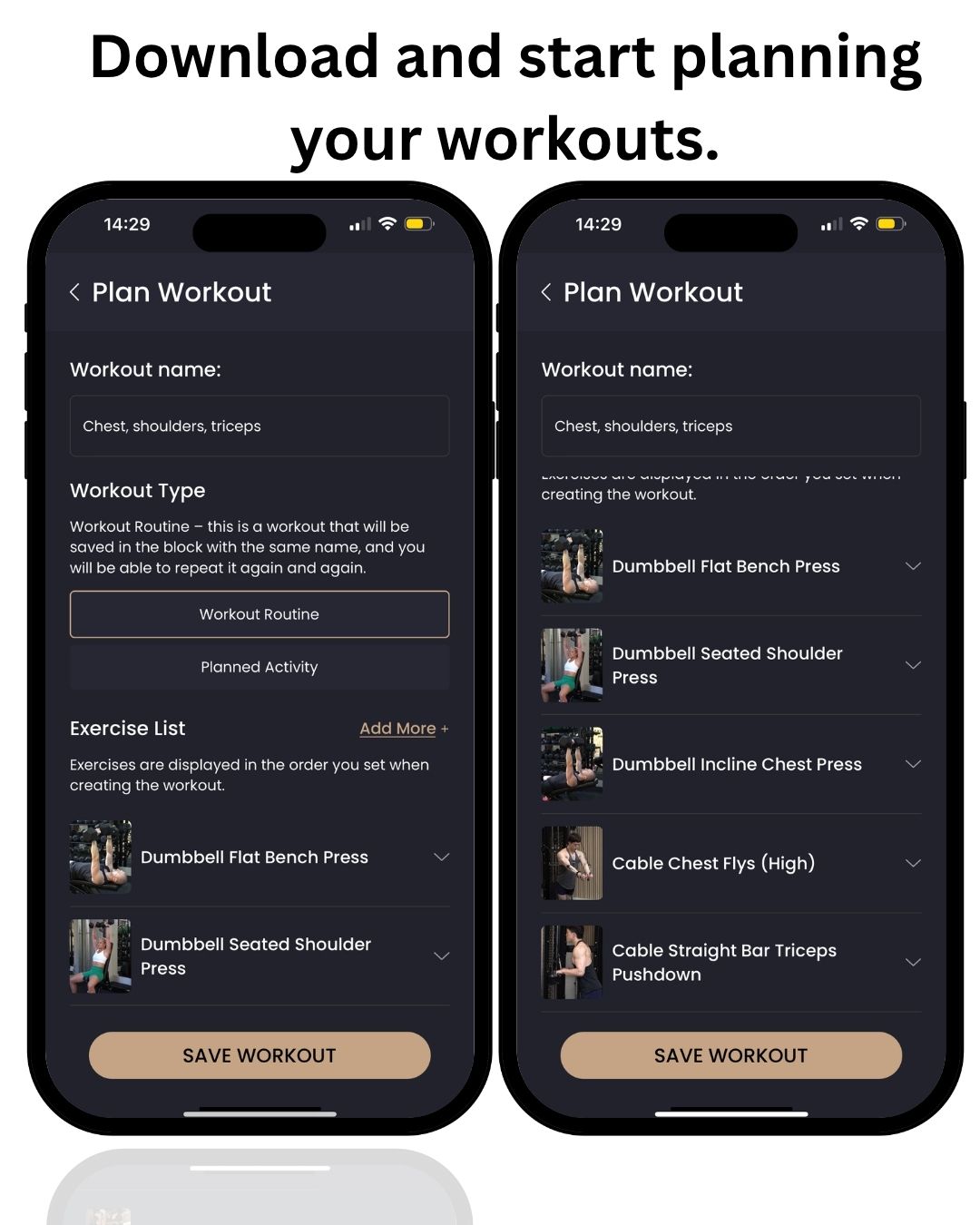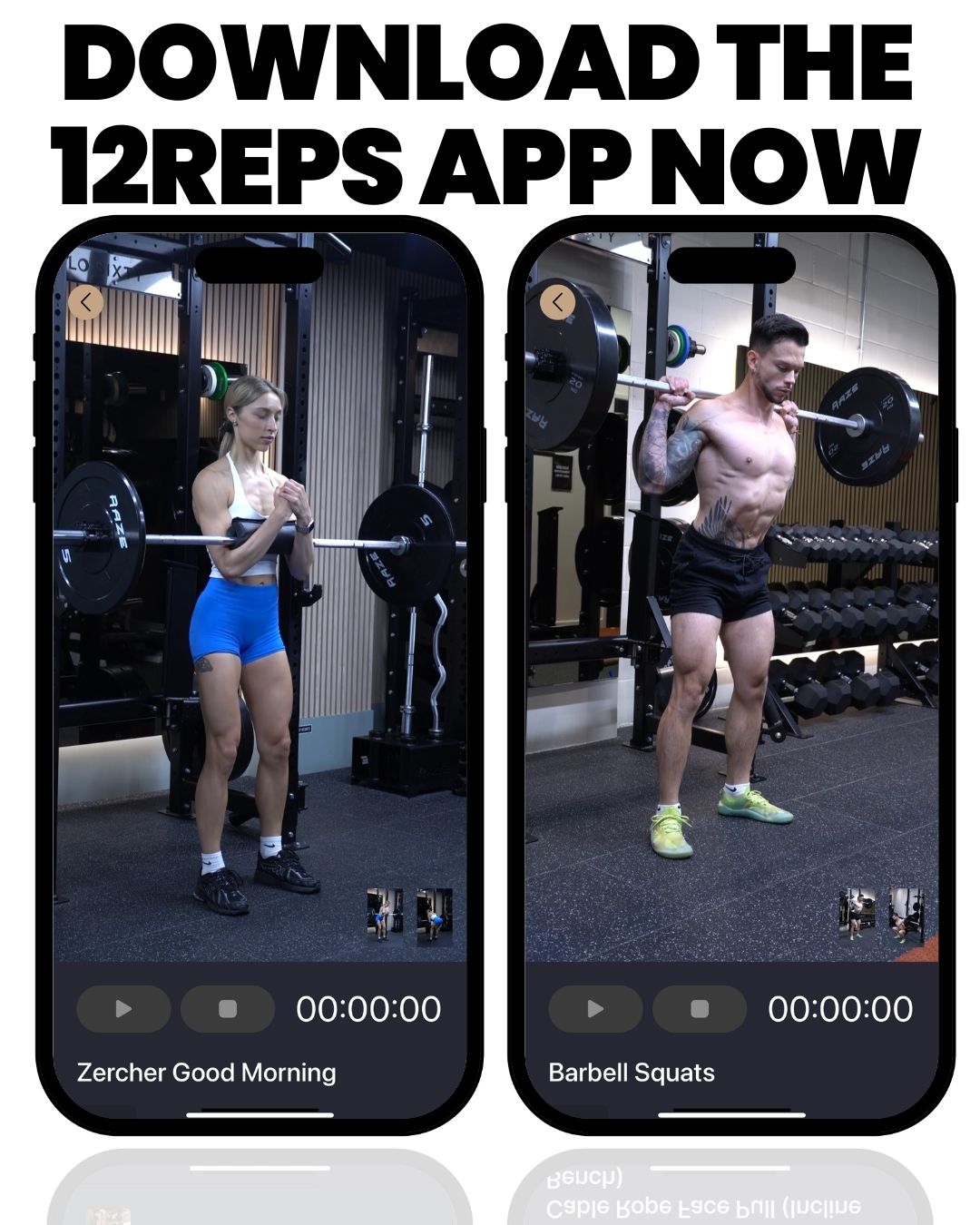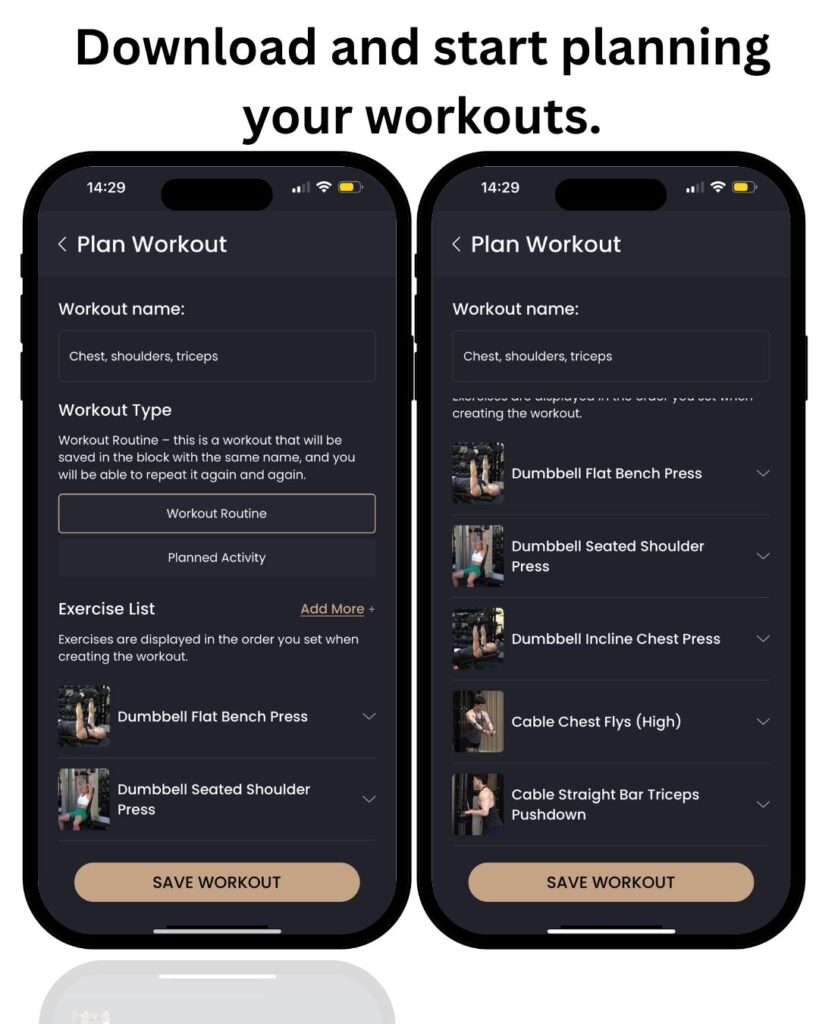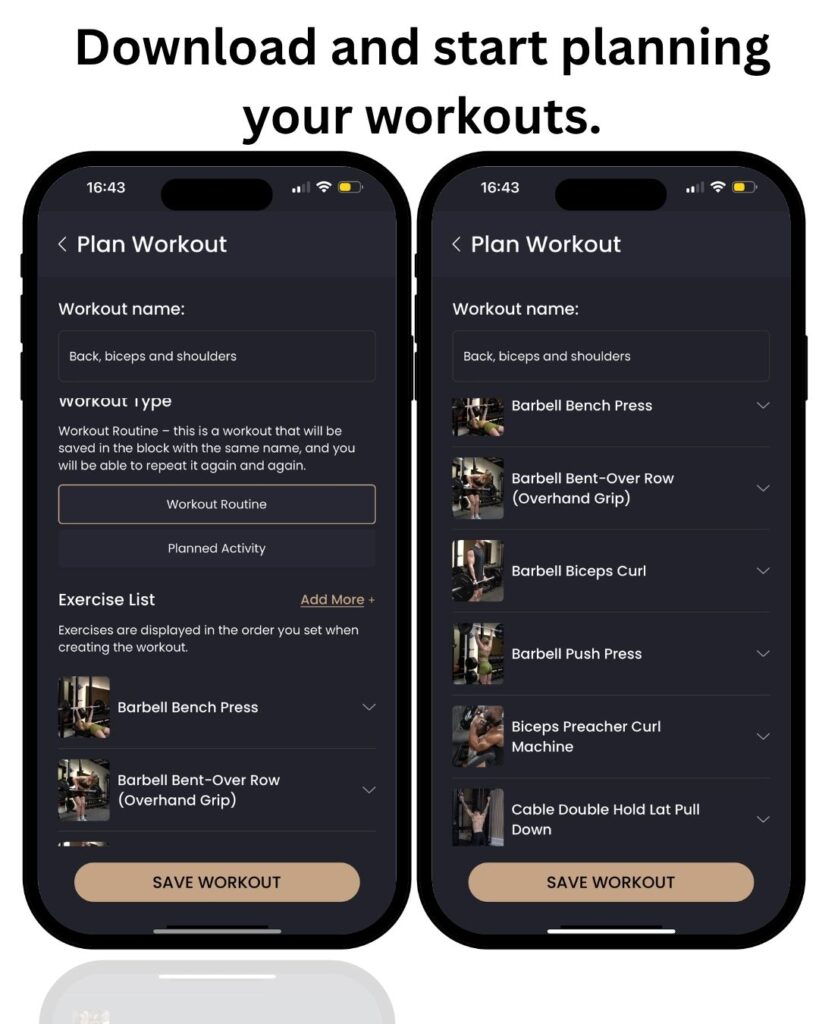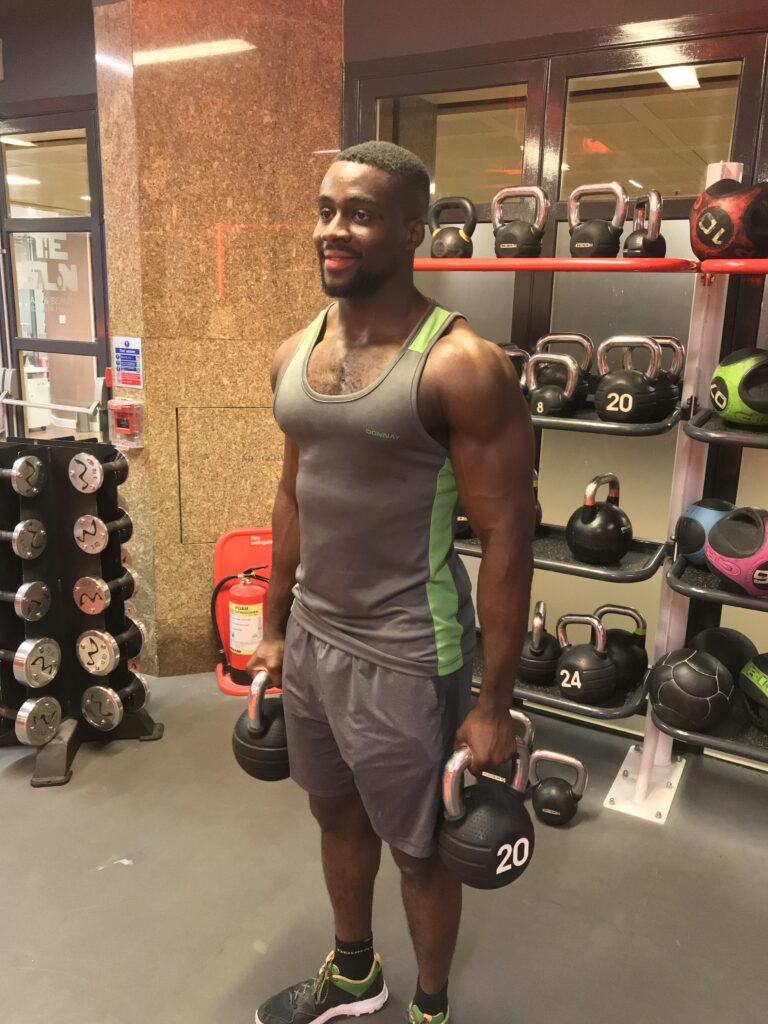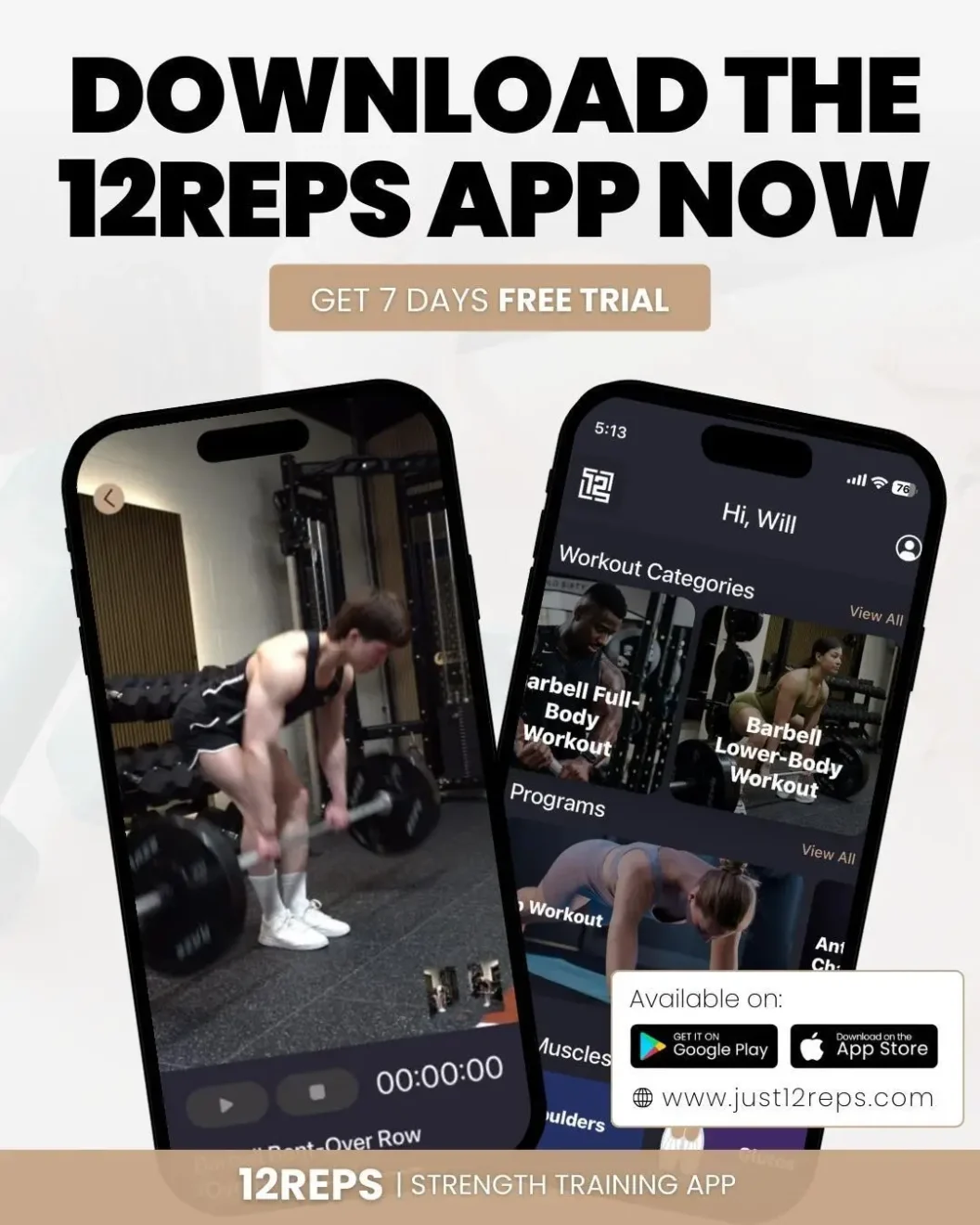By Will Duru, BSc (Hons) Sport and Exercise Science, an award-winning Personal Trainer with over 10 years of experience in strength training and optimising recovery.
Strength training is more than just lifting weights; it’s a journey of transformation. It’s about building not only a stronger body but also a more resilient mind. Many people begin strength training with the goal of changing their physical appearance, but they soon discover that the mental benefits are just as, if not more, rewarding. Building muscle can profoundly improve your self-confidence, equipping you with the mental fortitude to navigate life’s challenges without crumbling. The discipline of strength training forces you to become a more goal-oriented individual, teaching you how to create a plan and, more importantly, how to execute it.
This article outlines a comprehensive 6-day strength training split designed for a beginner aiming to gain 10kg of lean muscle in 12 months. We will explore a structured program that progresses from foundational bodyweight movements to more advanced weight training, incorporating the proven push/pull/legs methodology. We will also delve into the crucial roles of cardiovascular training and proper nutrition, providing you with a holistic roadmap to not only achieve your physical goals but also to unlock a new level of self-belief and mental toughness. This program is a testament to the progress that can be made in the first year of dedicated strength training, a journey that I began myself when I was 17.
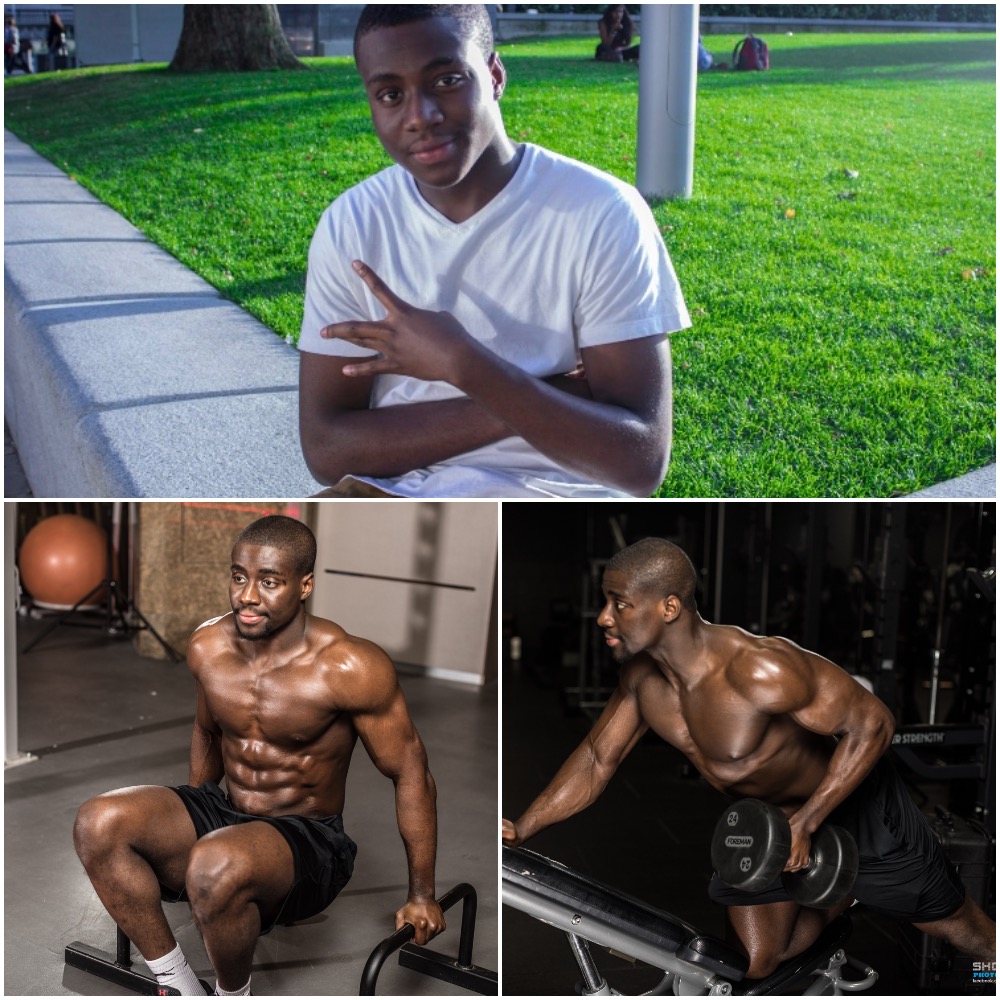
My Journey: From Summer Soccer Break to a Lifetime of Strength
My own journey into the world of strength training began during a summer break from football (soccer) when I was 17. I needed to stay active, and I decided to focus on building my body. After diving into research on how to build muscle and the right way to eat for growth, I concluded that the best place to start was with the fundamentals: bodyweight training. For the first four months, my local park became my gym. This initial phase was crucial for building a solid foundation of strength and mastering the correct form for essential exercises.
Why Beginners Should Start with Bodyweight Training
Starting with bodyweight exercises is a highly recommended approach for anyone new to strength training. It is a safer way to begin, as it carries a lower risk of injury compared to lifting heavy weights [1]. Bodyweight training allows you to build a strong base, teaching your body the correct movement patterns and ensuring you develop proper form from the very beginning. This method is not only effective for building functional strength and core stability, but it is also incredibly accessible. You don’t need a gym membership or expensive equipment; you can do it anywhere, anytime. This initial phase helps you build a strong mind-muscle connection and prepares your body for the more demanding challenges of weight training.
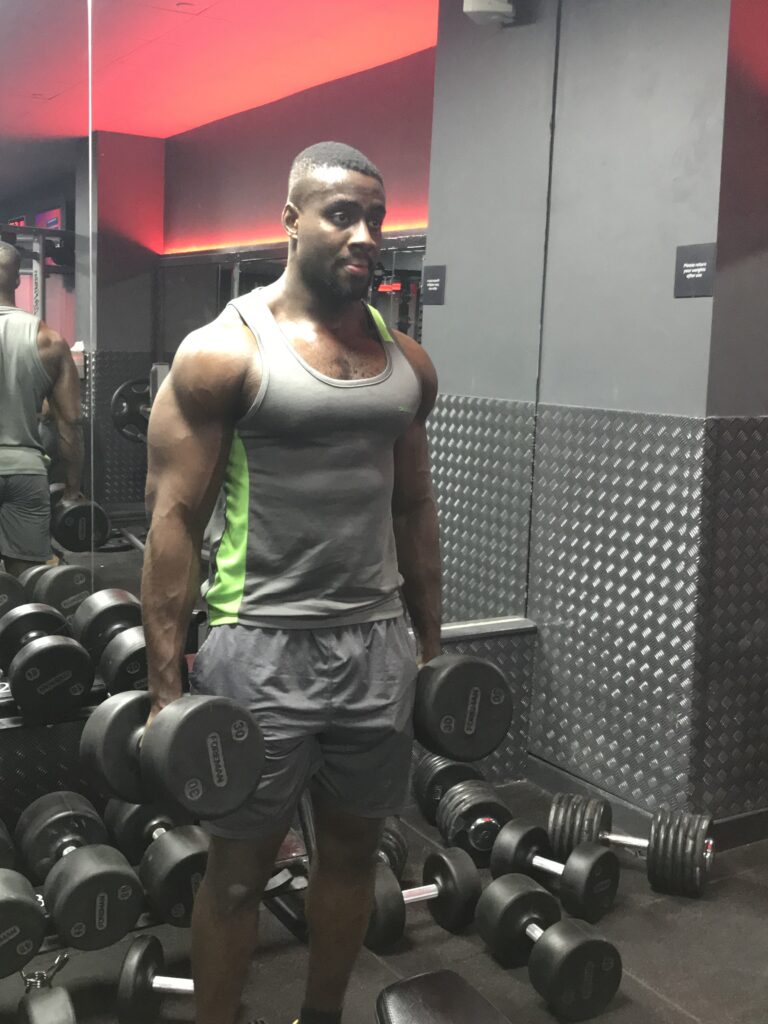
The First 4 Months: Bodyweight Foundation
I committed to the following bodyweight routine four times per week. This simple yet effective workout can be done at a local park with pull-up and dip bars, or you can invest in a pull-up bar and dip station for your home. The key to this phase is consistency and focusing on perfect form. Rest for two minutes after completing each round.
Exercise | Reps | Notes |
Bodyweight Press-ups | 10 | Focus on a full range of motion. |
Knee Press-ups | 10 | Use this as a regression if you can’t do 10 full press-ups. |
Chin-ups | 5 | Use a resistance band to assist if needed. |
Bodyweight Dips | 10 | Keep your chest up and shoulders down. |
Bodyweight Squats | 10 | Go as deep as you can while maintaining a straight back. |
Total Rounds | 12 |
After four months of this consistent training, I saw significant improvements in my muscle size, strength, and endurance. My physique had completely transformed, and I had gained 6kg of lean muscle mass. This initial success was a powerful motivator and set the stage for the next phase of my strength training journey.
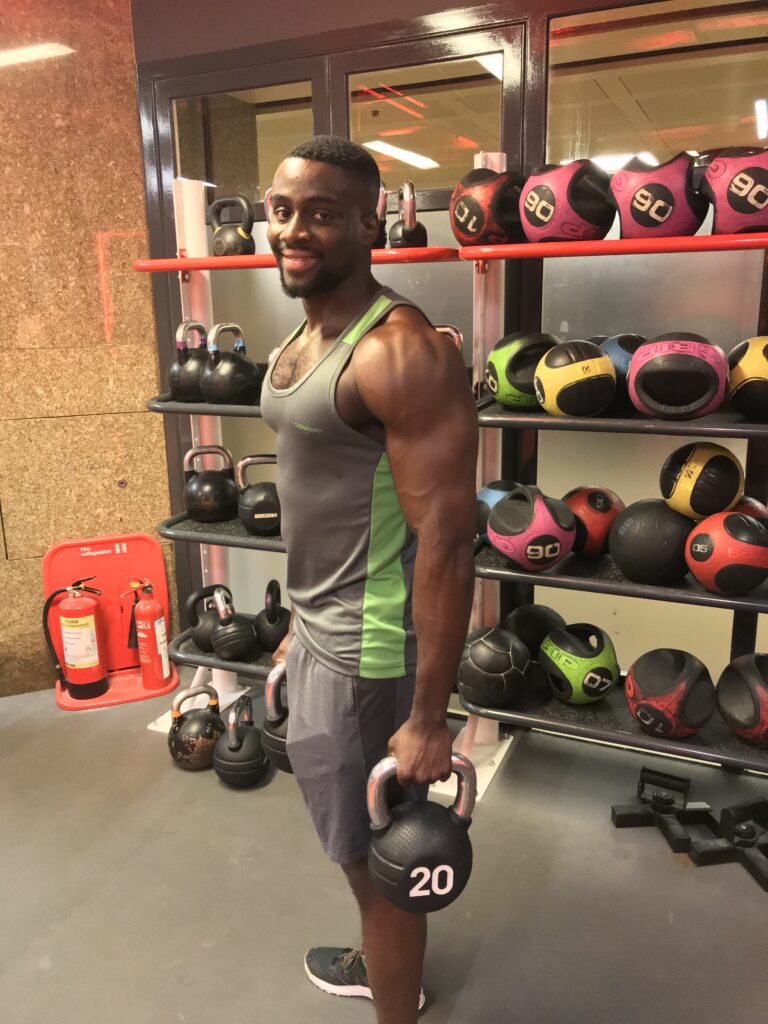
Fueling Your Growth: The Importance of Nutrition
A crucial component of this transformation was a significant increase in my protein intake. To build muscle, your body needs the right raw materials, and protein is the most important. I made a conscious effort to eat more protein-rich foods such as eggs, tuna, chicken, and red kidney beans. A good rule of thumb for anyone looking to build muscle is to consume 1.6-2.2 grams of protein per kilogram of body weight per day [2]. This ensures your muscles have the resources they need to repair and grow after each training session.
The Next 8 Months: Building Strength with Weights
After building a solid foundation with bodyweight exercises, the next 8 months are dedicated to a 5-day strength training program using a variety of equipment to introduce new stimuli and continue driving muscle growth. This program utilises a push/pull/legs split, one of the most effective and time-tested training methodologies for building both strength and size. The split is structured as follows:
- Push Day: Focuses on upper body muscles that involve pushing movements (chest, shoulders, triceps).
- Pull Day: Focuses on upper body muscles that involve pulling movements (back, biceps).
- Leg Day: Focuses on the entire lower body (quads, hamstrings, glutes, calves).
This 5-day split will look like this over a week: Push, Pull, Legs, Push, Pull, followed by two rest days. This high-frequency approach ensures each muscle group is trained twice a week, maximizing the opportunity for growth.
The Principle of Progressive Overload
To continuously build muscle, you must adhere to the principle of progressive overload. This means you must consistently challenge your muscles by gradually increasing the demands placed upon them. If you perform the same exercises with the same weight and reps every week, your body will adapt and have no reason to grow stronger. Progressive overload is the cornerstone of long-term progress. You can achieve this by:
- Increasing the weight: Lifting heavier weights over time.
- Increasing the reps: Performing more repetitions with the same weight.
- Increasing the sets: Adding more sets to your exercises.
- Decreasing rest times: Reducing the rest period between sets to increase workout intensity.
Throughout this 8-month program, your primary goal is to apply progressive overload. Keep a workout log to track your lifts, and aim to improve in some small way each week. This program is designed in three phases to ensure your body doesn’t adapt to the exercises, keeping the muscles guessing and promoting continuous growth. We will also incorporate advanced techniques like weighted press-ups, weighted dips, and weighted pull-ups as you get stronger.
Your 8-Month Training Plan: Structure and Progression
This 8-month program is divided into three distinct phases. Each phase introduces new exercises or variations to prevent plateaus and ensure your muscles are constantly challenged. Every workout should begin with a proper warm-up and end with a cool-down to aid recovery and prevent injury.
Warm-Up (10 minutes)
Start each session with 10 minutes of light cardio to increase your heart rate and warm up your muscles. Follow this with dynamic stretching to improve mobility.
- Cardio: 10-minute incline walk on a treadmill or 10 minutes on a rowing machine.
- Mobility Stretches:
Stretch | Reps/Duration | Notes |
Cat-Cow | 10 reps | Inhale on Cow, exhale on Cat. |
World’s Greatest Stretch | 5 reps/side | Hold each position for a few seconds. |
Hamstring Stretch | 30 sec/side | Gentle pull, no bouncing. |
Workout Structure
- Phase 1: 5 exercises, 3-4 sets per exercise.
- Phases 2 & 3: 5 exercises, each with 1 warm-up set before the working sets.
Here is the detailed breakdown of the workout program. You can track your progress, including sets, reps, weight, and rest periods, using the 12Reps app.
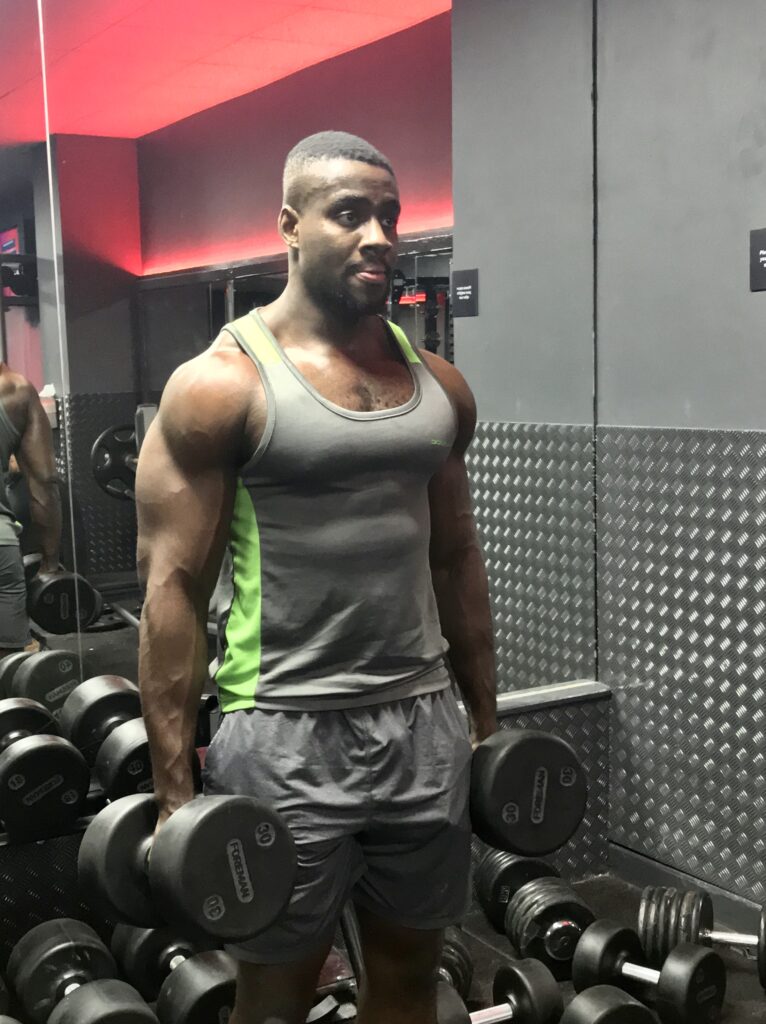
Exercise | Sets | Reps | Rest (sec) | Equipment |
Dumbbell Bench Press | 4 | 8-12 | 60-90 | Dumbbells |
Incline Dumbbell Press | 4 | 8-12 | 60-90 | Dumbbells |
Seated Dumbbell Shoulder Press | 3 | 10-15 | 60 | Dumbbells |
Triceps Dips (assisted or bodyweight) | 3 | 10-15 | 60 | Dip Station |
Cable Triceps Pushdown | 3 | 12-15 | 60 | Cable Machine |
Exercise | Sets | Reps | Rest (sec) | Equipment |
Pull-ups (assisted or bodyweight) | 4 | 6-10 | 60-90 | Pull-up Bar |
Bent-Over Barbell Row | 4 | 8-12 | 60-90 | Barbell |
Seated Cable Row | 3 | 10-15 | 60 | Cable Machine |
Dumbbell Bicep Curls | 3 | 12-15 | 60 | Dumbbells |
TRX Face Pulls | 3 | 15-20 | 60 | TRX |
Exercise | Sets | Reps | Rest (sec) | Equipment |
Barbell Back Squats | 4 | 8-12 | 90-120 | Barbell |
Romanian Deadlifts | 4 | 10-15 | 90 | Barbell/Dumbbells |
Leg Press | 3 | 12-15 | 60-90 | Leg Press Machine |
Glute Bridges | 3 | 15-20 | 60 | Bodyweight/Dumbbell |
Calf Raises | 4 | 15-20 | 45 | Bodyweight/Machine |
Remember to perform 1 warm-up set before your working sets for each exercise.
Exercise | Sets | Reps | Rest (sec) | Equipment |
Barbell Bench Press | 4 | 6-10 | 90-120 | Barbell |
Seated Machine Shoulder Press | 4 | 8-12 | 60-90 | Machine |
Weighted Dips | 3 | 8-12 | 60-90 | Dip Station/Belt |
Kettlebell Arnold Press | 3 | 10-15 | 60 | Kettlebells |
Overhead Triceps Extension | 3 | 12-15 | 60 | Dumbbell/Cable |
Exercise | Sets | Reps | Rest (sec) | Equipment |
Weighted Pull-ups | 4 | 6-8 | 90-120 | Pull-up Bar/Belt |
T-Bar Row | 4 | 8-12 | 60-90 | T-Bar Row Machine |
Lat Pulldowns | 3 | 10-15 | 60 | Cable Machine |
Hammer Curls | 3 | 12-15 | 60 | Dumbbells |
Sled Pulls | 3 | 20m | 90 | Sled |
Exercise | Sets | Reps | Rest (sec) | Equipment |
Trap Bar Deadlifts | 4 | 5-8 | 120-180 | Trap Bar |
Dumbbell Lunges | 4 | 10-12/leg | 90 | Dumbbells |
Kettlebell Goblet Squats | 3 | 12-15 | 60-90 | Kettlebell |
Hip Thrusts | 3 | 10-15 | 60 | Barbell/Bench |
Seated Calf Raises | 4 | 15-20 | 45 | Machine |
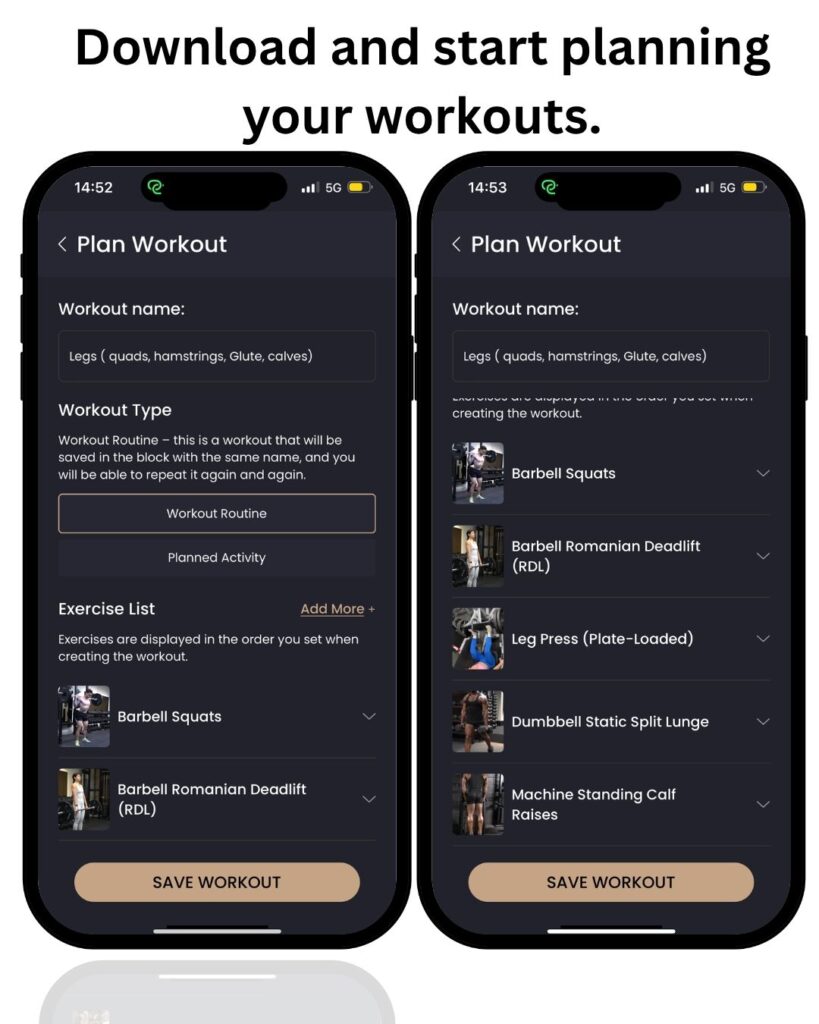
Phase 3 (Months 7-8)
Remember to perform 1 warm-up set before your working sets for each exercise.
Push Day
|
Exercise |
Sets |
Reps |
Rest (sec) |
Equipment |
|
Incline Barbell Bench Press |
4 |
6-10 |
90-120 |
Barbell |
|
Weighted Press-ups |
4 |
10-15 |
60-90 |
Weight Plate |
|
Standing Overhead Press |
3 |
8-12 |
90 |
Barbell |
|
TRX Triceps Extension |
3 |
12-15 |
60 |
TRX |
|
Machine Chest Fly |
3 |
15-20 |
60 |
Machine |
Pull Day
|
Exercise |
Sets |
Reps |
Rest (sec) |
Equipment |
|
Rack Pulls |
4 |
5-8 |
120-180 |
Barbell/Rack |
|
Single-Arm Dumbbell Row |
4 |
8-12 |
60-90 |
Dumbbell/Bench |
|
Close-Grip Pulldowns |
3 |
10-15 |
60 |
Cable Machine |
|
Preacher Curls |
3 |
12-15 |
60 |
Preacher Bench |
|
Sled Pushes |
3 |
20m |
90 |
Sled |
Leg Day
|
Exercise |
Sets |
Reps |
Rest (sec) |
Equipment |
|
Front Squats |
4 |
6-10 |
120-180 |
Barbell |
|
Bulgarian Split Squats |
4 |
10-12/leg |
90 |
Dumbbells/Bench |
|
Kettlebell Swings |
3 |
15-20 |
60-90 |
Kettlebell |
|
Good Mornings |
3 |
12-15 |
60 |
Barbell |
|
Leg Extensions |
3 |
15-20 |
60 |
Machine |
Cardio and Core: The Finishing Touches
Cardiovascular Training
Cardio is essential for heart health, endurance, and managing body fat. Incorporate two different types of cardio into your week:
- • Zone 3 Cardio (2 sessions/week): This is steady-state cardio performed at a moderate intensity. Aim for 30-45 minutes of running outside or on a treadmill. You should be able to hold a conversation, but it would be slightly difficult.
- • Interval Cardio (1 session/week): High-intensity interval training (HIIT) is excellent for boosting your metabolism. Use a Wattbike or treadmill for this. A sample routine would be:
- – 5-minute warm-up
- – 30 seconds of maximum effort sprint
- – 90 seconds of slow recovery pace
- – Repeat for 8-10 rounds
- – 5-minute cool-down
Core Finisher
A strong core is vital for stability in all your lifts and helps prevent lower back pain. Add this finisher to the end of your leg day workouts. Perform the three exercises back-to-back with minimal rest, and rest for 60 seconds after completing all three. Complete 3 total sets.
|
Exercise |
Duration/Reps |
Notes |
|
Plank |
45 seconds |
Keep your back straight and core engaged. |
|
Flutter Kicks |
45 seconds |
Keep your lower back pressed to the floor. |
|
Decline Sit-ups |
10 reps |
Control the movement, don’t use momentum. |
Cool-Down (10 minutes)
Finish every workout with a 10-minute cool-down to help your body begin the recovery process. A slow walk on the treadmill or 10 minutes on the Stairmaster are both excellent options.
Track Your Journey with the 12Reps App
Consistency and tracking are the keys to long-term success in strength training. To make this process easier, you can build this entire program in the 12Reps app. Navigate to ‘Build Your Routine’ and select all the exercises from this program. The app serves as a powerful workout tracker, allowing you to log your weights, reps, and sets, and use the built-in stopwatch to monitor your rest periods. You can save your workouts, plan ahead, and even share your progress with friends.
This program is your blueprint for a successful year of muscle building. The journey will be challenging, but the rewards—both physical and mental—are immeasurable. Stay dedicated, trust the process, and get ready to transform your life. Start your free trial today and take the first step towards a stronger, more confident you.
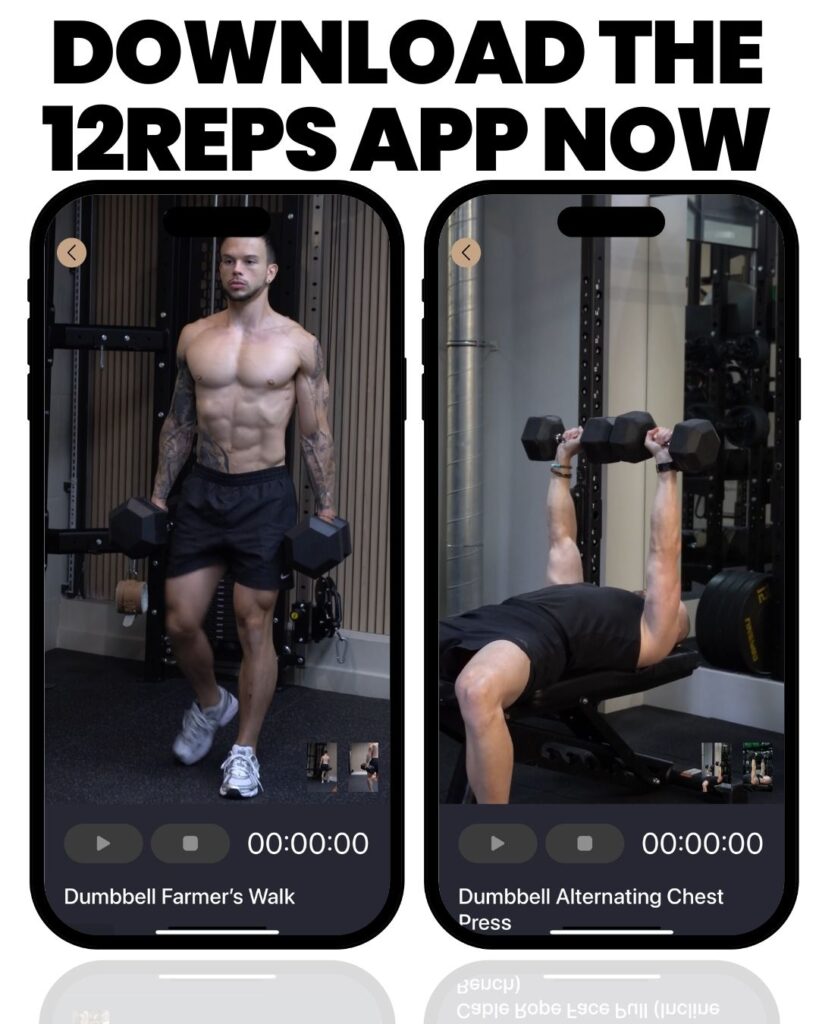
References
[1] Gravity Fitness. (2025, March 13). Why you shouldn’t lift weights unless you can do calisthenics. Retrieved from https://gravity.fitness/blogs/training/why-you-shouldnt-lift-weights-unless-you-can-do-calisthenics
[2] USADA. (n.d.). When to Consume Protein for Maximum Muscle Growth. Retrieved from https://www.usada.org/spirit-of-sport/when-consume-protein-muscle-growth/

